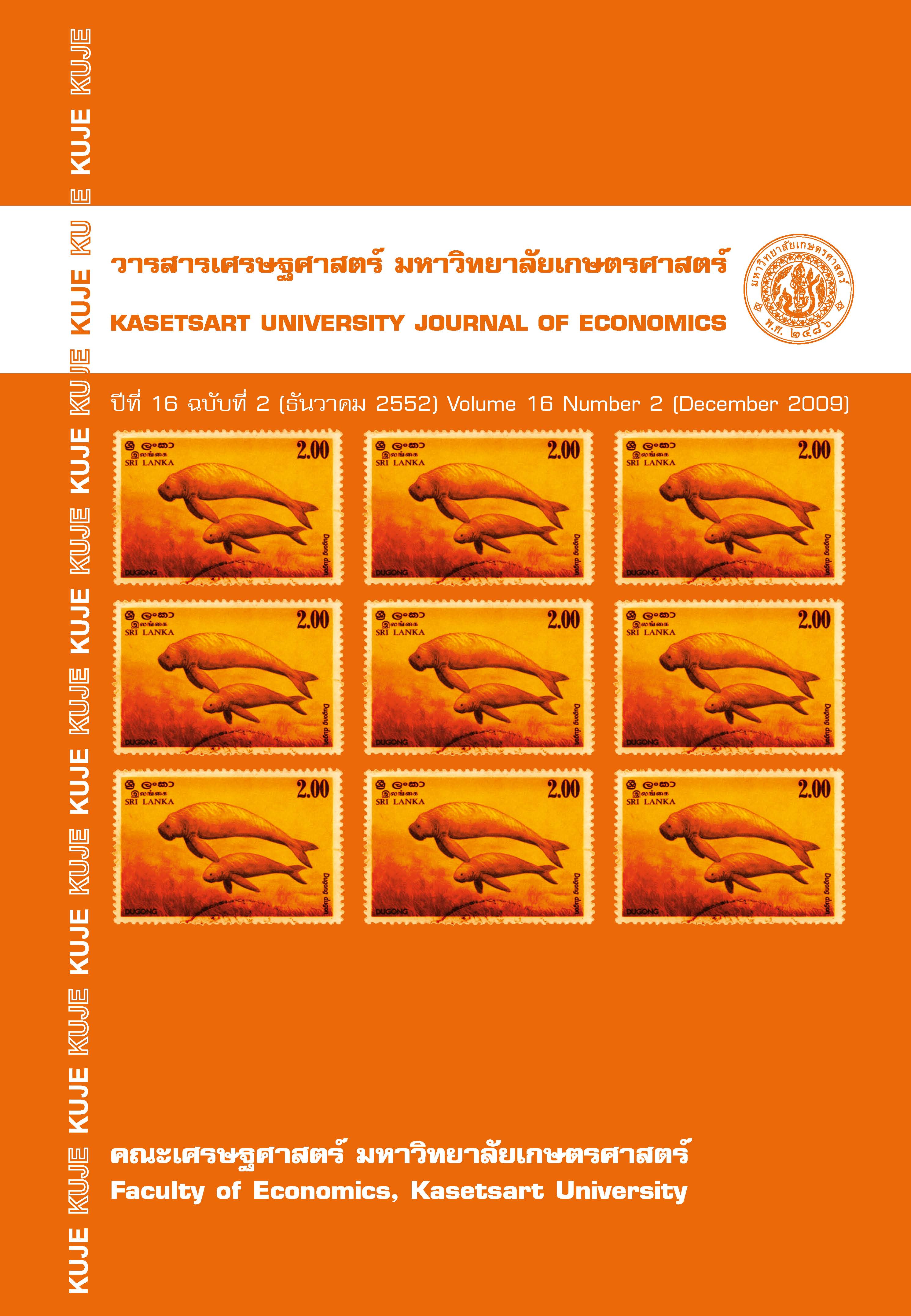ผลได้และต้นทุนทางเศรษฐกิจและสิ่งแวดล้อมของการทำเอฟทืเอของไทย
Main Article Content
Abstract
บทคัดย่อ
ประเทศไทยได้มีข้อตกลงเขตการค้าเสรีแล้วกับ 5 ประเทศ ได้แก่ อินเดีย จีนออสเตรเลีย นิวซีแลนด์ และญี่ปุ่น จากการทำข้อตกลงดังกล่าว ทำให้มีประเด็นข้อสงสัยถึงผลได้และต้นทุนทางเศรษฐกิจและ สิ่งแวดล้อมที่จะเกิดขึ้นกับประเทศไทย การศึกษาครั้งนี้มุ่งวิเคราะห์เปรียบเทียบผลได้และต้นทุนทางเศรษฐกิจ และสิ่งแวดล้อมทั้งทางตรงและทางอ้อม โดยอาศัยผลการคำนวณจากแบบจำลองดุลยภาพทั่วไป การศึกษา ครอบคลุมสินค้า 25 หมวด และต้นทุนสิ่งแวดล้อม 9 ประเด็น ผลการศึกษาพบว่า ประเทศไทยได้เปรียบดุ ด้านเศรษฐกิจเป็นมูลค่า 2,254,745 ล้านบาท และเสียเปรียบดุลด้านสิ่งแวดล้อม -2,443,683 ล้านบาท เมื่อเปรียบเทียบการส่งออกและนำเข้าสินค้ารายการต่างๆ และเปรียบเทียบรายประเทศพบว่า การทำเอฟทีเอก่อให้เกิดมูลค่าผลได้ทางเศรษฐกิจและต้นทุนทางสิ่งแวดล้อมแตกต่างกันผลการศึกษาชี้ให้เห็นความจำเป็น ที่ประเทศไทยควรหันมาพิจารณาเลือกและทบทวนรายการสินค้าในระดับคู่สัญญา โดยใช้หลักเกณฑ์ความ ได้เปรียบ-เสียเปรียบของผลประโยชน์ทั้งทางเศรษฐกิจและสิ่งแวดล้อม
คำสำคัญ: ข้อตกลงเขตการค้าเสรี ต้นทุนสิ่งแวดล้อม แบบจำลองดุลยภาพทั่วไป
Abstract
Thailand has entered into free trade agreements (FTA) with five countries, namely, India, China, Australia, New Zealand and Japan. This study aims to assess and compare the benefits from and costs of the FTA using the outputs from computable general equilibrium (CGE) analysis. The analysis covers 25 export and import items and 9 components of the associated environmental cost. The results reveal that Thailand obtained a favorable balance in economic value of2,254,745 million baht, and unfavorable balance in environmental value of -2,443,683 million baht. A comparison of the export and import items and by countries shows that the economic and environmental values gained from FTA were varied. This strongly suggests a reselection and revision of items exported to and imported from each FTA partner on the basis of both economic and environmental gains and losses.
Keywords: free trade agreement, environmental cost, computable general equilibrium model
Article Details
The paper is published under CC BY-NC-ND, in which the article is freely downloaded and shared in its original form non-commercially and its citation details are identified.


